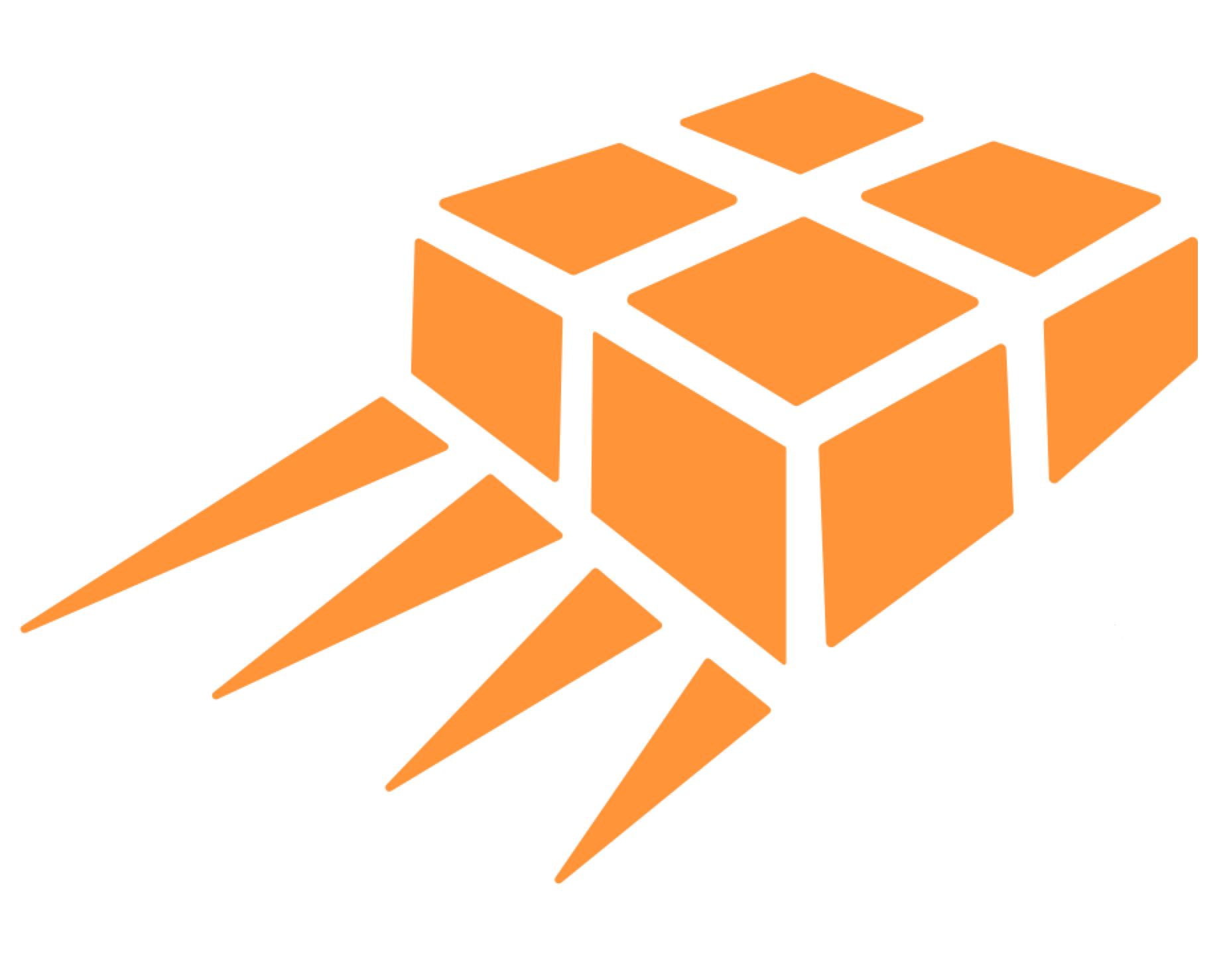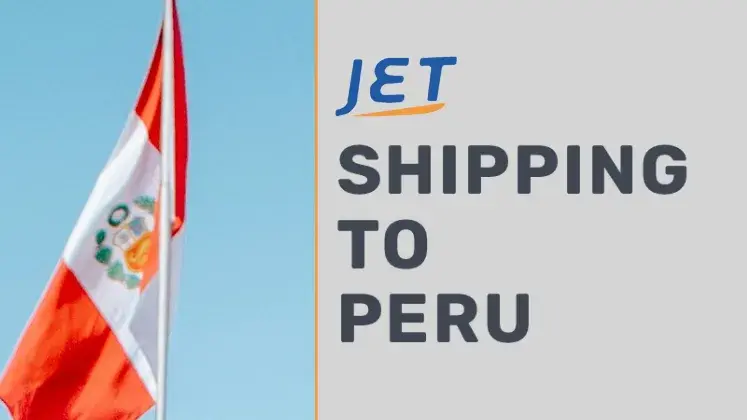
Shipping Peru from Canada: Carriers, Customs and CPTPP
Peru represents a growing business opportunity for Canadian companies. Peru's environmental and labour cooperation with Canada make it one of the best countries to do business with. The Peru-Canadian Free Trade Agreement eliminates tariffs on virtually all Canadian exports to Peru.
Jet Worldwide provides Shipping to Peru from Canada.
Jet Worldwide shares our logistics expertise (as evidenced by our industry leading blog articles) and global parcel shipping solutions: Including shipping to Peru from Canada. For professional insights, a comparison quote or "out of the box" solution.
Guide for shipping between Peru and Canada
- Carrier options shipping Peru from Canada
- Shipping terms to Peru delivery duty paid or unpaid
- Peru Customs clearance duty, VAT and low value threshold
- Canada-Peru FTA and CPTPP and preferential duty free entry
- Carrier Options for Shipping from Peru TO Canada
- Common Canadian import fees for imports from Peru
- Simplified CPTPP duty free shipping TO Canada for Peru origin goods

As one of Canada's largest trading partners in South America, Peru's importance to Canadian businesses cannot be overlooked. Jet helps Canadian companies continue to find opportunities for business growth in Peru via our low cost shipping and innovative logistics support.
Best Canadian Carrier Options Shipping to Peru
There are several shipping options available for sending goods between Peru and Canada. The best option for you will depend on your specific needs and preferences, such as the type and size of the goods you are shipping, the speed of delivery you require, and your budget. Here are some common shipping options that you might consider:
- Air freight: This is the fastest shipping option with door to door integrated solutions.
- Ocean freight: For shipping full container loads
- Commercial carriers such as FedEx, DHL, UPS and their partners.
- Postal services are generally best for individuals shipping small shipments and personal items
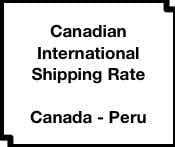
Shipping to Peru via Canada Post
Canada Post offers the lowest cost for small packets (under 2kg) to Peru. Most packages under 2 kg can be sent via Canada-Post "small packet" services.
Parcels sent via Canada Post are delivered via Serpost (El Correo del Peru).
Canada Post Services to Peru include:
- Canada-Post Small Packet to Peru
- International Parcel Canada-Post to Peru
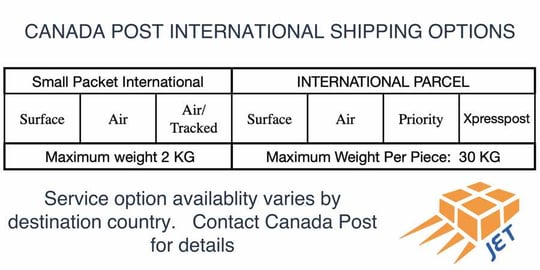
Shipping to Peru via FedEx and UPS Canada
FedEx and UPS are North America's largest parcel carriers and, along with DHL, offer reliable express delivery to Peru from Canada. FedEx and UPS Canada can be expensive, especially for small companies who are unable to benefit from significant discounts.
FedEx and UPS Canada shipping options to Peru include:
- International air express priority to Peru
- International economy international air shipping from Canada

Get economy shipping to Lima, Pisco, Moquegua, and across Peru.
Jet Worldwide is a trusted brand that has been providing international shipping solutions for over 40 years. Jet Worldwide provides options for shipping between Canada and Peru for parcels, pallets and online orders.We are happy to help with your shipping between Canada and Peru. Provide information regarding the category of goods, volume,and restrictions that should be taken into account.

International shipping to Peru via Purolator Courier
Purolator is a leading Canadian Carrier and provides international package delivery to Peru via partners (including UPS) and third party logistics suppliers.
Shipping Terms to Consider When Shipping to Peru
The default option for shipping internationally from Canada is delivery duty unpaid. Common carriers use the term EXW which essentially assigns all import related costs (duty, taxes, and other fees) to the receiver/ importer. Shippers from Canada can choose to pay the import fees on behalf of the receiver via a Delivery Duty Paid (DDP) options that many carriers offer.
See our blog on Incoterms and shipping terms for packages and online orders.
The disadvantage of paying import fees on behalf of the receiver is that the bulk of the import fees are often from a value added tax that the importing business may otherwise be able to claim back.
Peru Customs requires the receiver’s legal identification for tax purposes
- Peruvian Residents – DNI Number (Identity Card)
- Peruvian Companies or Individuals – RUC Number (Registro Único de Contribuyentes)
- All others – Passport Number or foreigner card (CE)
Import Clearance of Goods sent from Canada to Peru
Canada is one of the top importers to Peru. The customs valuation used by Peruvian customs is based on CIF value ( the sum of cost of goods, insurance and shipping cost). Goods can be declared using an invoice for customs.
All shipments to Peru (including samples and gifts) need the TAX ID number of the importer or consignee as a governmental requirement. For Individuals: DNI, for Companies: RUC, for foreigners: Passports or any TAX ID.
Shipments between Canada and Peru are generally subject to “most favoured nation” / MFN rate of duty. Goods that qualify as originating from Peru or Canada under rules of origin of the CPTPP free trade agreement can qualify for preferential duty free import. MFN duty rates apply to non-originating goods shipped between Canada and Peru.
Peruvian Customs (SUNAT) requires a Customs Merchandise Declaration (DAM – in Spanish), a commercial invoice, an airway bill or bill of lading, a packing list, and an insurance letter.
- In addition to duty, most items imported from Canada to Peru are subject to a Value Added and municipal Tax of 18%.
If the product is imported from Canada seeking duty free status, a certificate of origin is required to qualify for tariff preferences.
- Goods can be brought into a Peruvian bonded warehouse without paying import duties for up to twelve months. During that period, the importer can pay the duties on the goods kept in the warehouse and clear customs, or re-export the goods. This can be done for the entire shipment, or it can be broken down according to the importer’s needs.
- Sanitary and Phytosanitary (SPS) regulations are enforced by SENASA. Canadian exporters are encouraged to request from SENASA an updated list of SPS requirements through the importer before shipping products to Peru.
VAT and Import Duties in Peru shipping from Canada
- The duty free low value tax and duty threshold is $200 USD (around $250 CAD).
- The effective VAT rate is 18 percent (as mentioned above)
- Most fashion products are subject to a duty rate of 11%
- Peru uses the CIF method of tax and duty calculation (see explanation above)
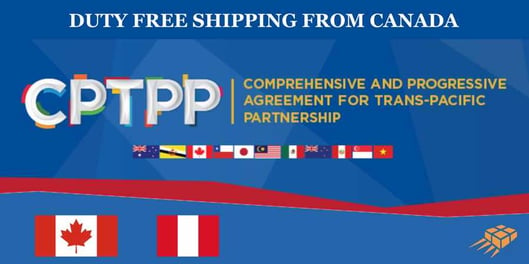
Rules of Origin: CPTPP vs CPFTA
The Most Favoured Nation (MFN) tariff rates of Peru are generally applicable to imports from Canada. Goods that qualify under CPTPP or CPFTA rules of origin can benefit from preferential lower tariff rates - including duty free.;However, the choice of which agreement to apply must be made at the time of import.
CPFTA is a bilateral agreement between Canada and Peru while CPTPP is a multilateral agreement among many countries. Both have different rules of origin that determine whether a good qualifies for the preferential tariff treatment under the agreement.
CPTFA Rules of Origin
The CPFTA has general rules of origin that apply to all goods and are based on the percentage of regional value content (RVC) of a good. This means that a good must meet a certain percentage of RVC in order to qualify for the agreement's benefits. However, the CPFTA doesn't have any specific category-specific rules of origin (CSRO) for certain goods such as automobiles, textiles, and certain chemicals.
Benefit from Canada's Free Trade Agreements
CPTPP rules of Origin
On the other hand, the CPTPP has both general rules of origin and CSROs. The general rules of origin are based on the percentage of regional value content (RVC) of a good, which measures the degree to which the good has been produced within the CPTPP region. In addition to RVC, there are also specific product-specific rules of origin (PSR) for certain goods such as automobiles, textiles, and certain chemicals. The PSR specify the specific production processes and materials that a good must go through in order to qualify for preferential treatment under the agreement.
In general, the CPTPP has more detailed and complex rules of origin than the CPFTA, which is meant to ensure that the benefits of the agreement are restricted to goods that are actually produced in the region.
The rules origin are complex it is best to confirm compliance as early as possible. Always confirm compliance with the importer and regulatory authorities prior to shipping.
Duty free Peru Import via CPTPP Trade Agreement:
Shippers can choose between the Canada Peru Free Trade Agreement or CPTPP when seeking preferential import duty and clearance.
DUTY FREE ≠ TAX FREE:
It is important to understand that CPTPP applies to duty assessments but not taxes. All goods - even those cleared duty free - are subject to Peru taxes (18% Value Added and Municipal Tax).
CPTPP Country Of Origin Declaration
Benefit by including a certificate of origin to Canada
The country of origin used by Canadian customs to determine if preferential duty free import can be applied. The country of origin is also a data point used to support regulatory actions such as quarantine, import quotas, to ensure that the goods being imported comply with relevant regulations.
Read more: Understanding a certificate of origin.

In order to claim the preferential tariff treatment to Peru from Canada under CPTPP, a set a data elements referred to as a ‘certification origin’ must be provided by the exporter, producer or importer of the goods by adding the information to any document (e.g., Commercial Invoice) accompanying the shipment or if preferred, by providing it on a separate document. The data elements do not have to follow a prescribed format but must contain the minimum data elements listed below. In addition, the imported goods must originate and be exported from a CPTPP ratified country.
- Indicate the Certifier (Importer, Exporter or Producer)
- Name, Address and Contact Information of the Certifier
- Name, Address and Contact Information of the Exporter (if different from the certifier)
- Name, Address and Contact Information of the Producer (if different from the certifier, or exporter)
- Name, Address and Contact Information of the Importer
- Description and HS Tariff Classification for the Goods
- Origin Criterion for the Goods
- Blanket Period
- Authorized Signature and Date
Note: The certification of origin must be signed and dated by the Certifier and accompanied by the following statement:
“I certify that the goods described in this document qualify as originating and the information contained in this document is true and accurate. I assume responsibility for proving such representations and agree to maintain and present upon request or to make available during a verification visit, documentation necessary to support this certification”
For full details regarding the minimum data requirements for the certification of origin, please refer to Annex 3-B of the CPTPP agreement.
Information for Commercial to Peru seeking CPTPP duty free entry
.Products valued less than US$1000 in local currency that are sent to Chile only require a signed statement completed by the importer, exporter or producer certifying that the goods originated from Canada. This can be included as part of - or in addition to - the commercial invoice. All other supporting document should also be included. Higher value shipments require a certification of origin to claim CPTPP preferential tariff treatment.
Shipping to Canada Carrier Options
The common carrier options for shipping from Peru to Canada include local post (best for individuals sending personal shipments), global couriers (FedEx, UPS, DHL) and forwarders. Jet Worldwide can provide you with comparison shipping rates from Peru.
Common Fees for Canadian Imports from Peru
The common fees importing to Canada include duty, tax, and carrier disbursement fees.
Proof of origin requirements Importing to Canada's via CPTPP
The value for duty amount for all of Canada's free trade agreements (including CPTPP) for which the proof of origin / certificate of origin is up to $3,300 CAD. NAFTA/ CUSMA.
For imports not exceeding $3,300 to Canada, the requirement for proof of origin is waived. The requirement on the importer to maintain records (for example, commercial invoice and B3) applies even if the CBSA does not require a certification of origin or if a requirement for a certification of origin has been waived.







